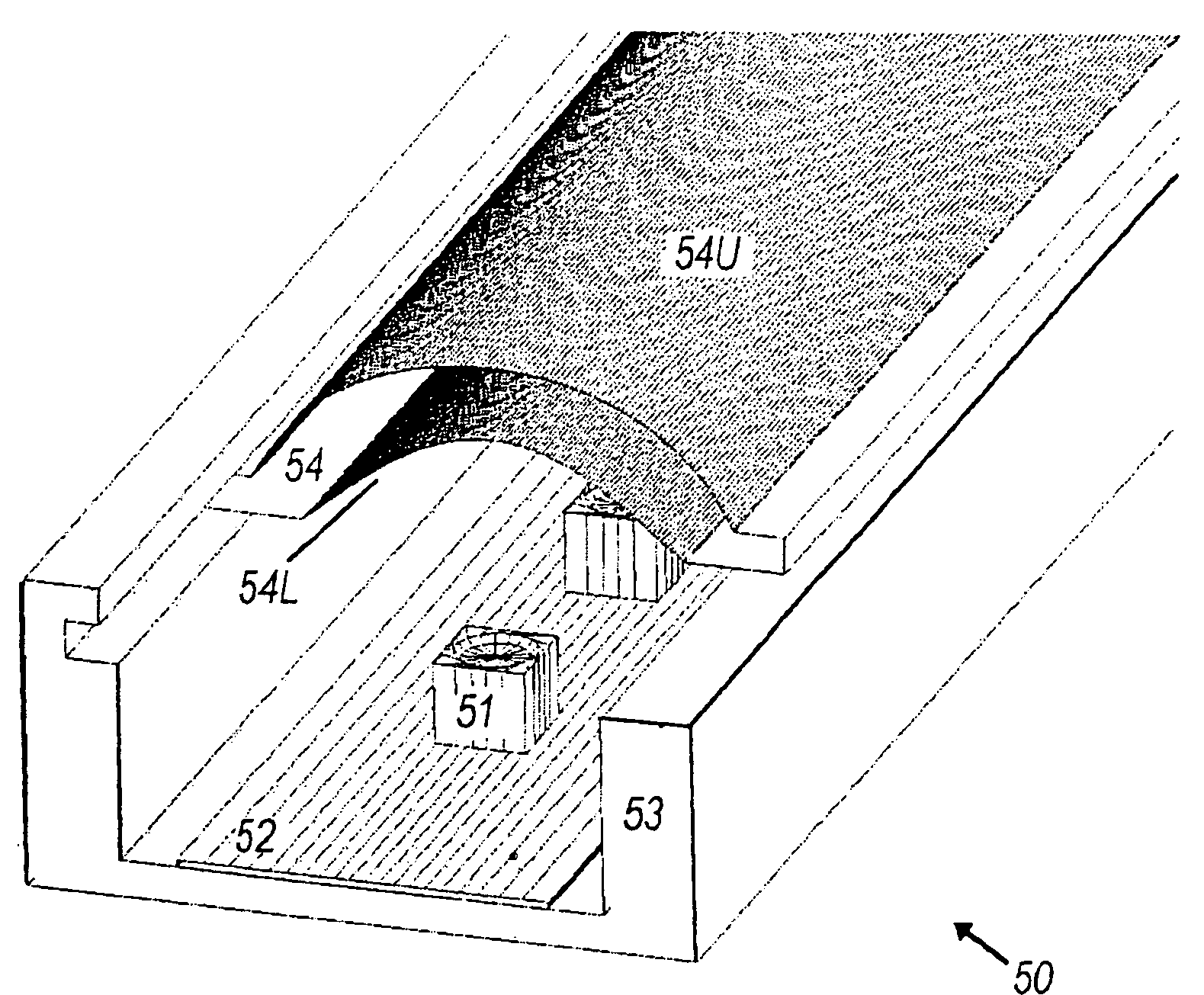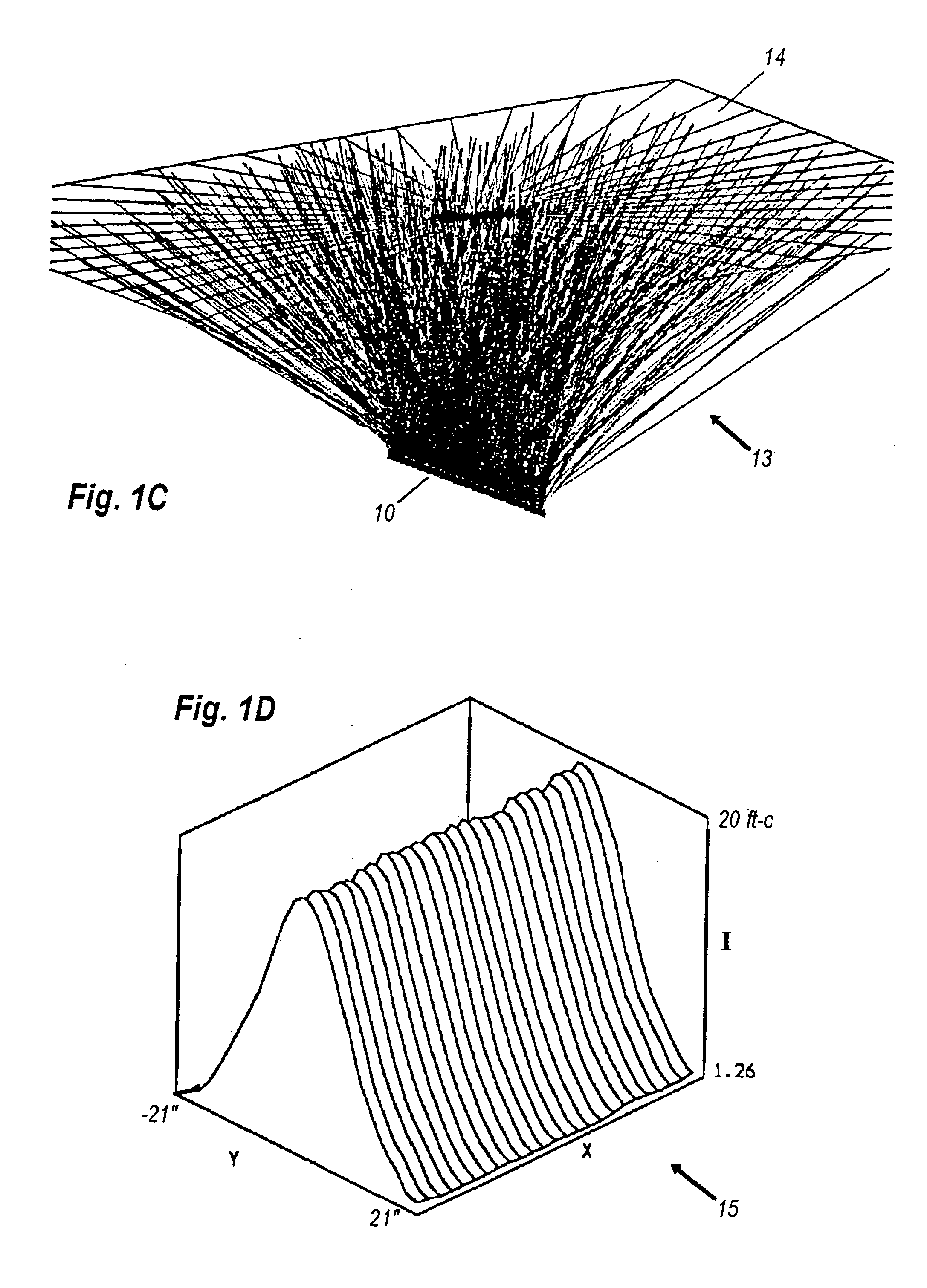Cylindrical irradiance-mapping lens and its applications to LED shelf-lighting
a technology of irradiance mapping and lens, applied in the direction of lighting support devices, instruments, condensers, etc., can solve the problems of linear lenses, inherently difficult to tailor linear lenses, and complicating the lateral flux control necessary for uniform illumination, etc., to achieve uniform output illumination
- Summary
- Abstract
- Description
- Claims
- Application Information
AI Technical Summary
Benefits of technology
Problems solved by technology
Method used
Image
Examples
Embodiment Construction
[0039] A Lambertian light source presents constant luminance at all viewing angles, so that off-axis foreshortening of its flat output aperture gives a cosine dependence of intensity. FIG. 1 shows a schematic of LED tape system 10 with LEDs 11 on thin electrified tape 12. FIG. 1B shows same but also with short Monte Carlo ray-segments 13.
[0040]FIG. 1C shows tape system 10 emitting rays 13 that propagate out to target 14 at 1′ distance.
[0041]FIG. 1D shows 3-D illuminance plot 16 with height showing illuminance I in foot-candles across transverse dimension y of a target 1′ from the tape. As can be seen, illuminance has a central peak of 20 ft-c but is very dim at the edge, where incidence angle is 60°. Remedying this extreme nonuniformity is the object of the present invention.
[0042] Usually the intensity distribution of LEDs is given as a function of off-axis angle θ, with a circular distribution implicit. In the linear-lens case, however, the lateral off-axis angle a is for a lon...
PUM
 Login to View More
Login to View More Abstract
Description
Claims
Application Information
 Login to View More
Login to View More - R&D
- Intellectual Property
- Life Sciences
- Materials
- Tech Scout
- Unparalleled Data Quality
- Higher Quality Content
- 60% Fewer Hallucinations
Browse by: Latest US Patents, China's latest patents, Technical Efficacy Thesaurus, Application Domain, Technology Topic, Popular Technical Reports.
© 2025 PatSnap. All rights reserved.Legal|Privacy policy|Modern Slavery Act Transparency Statement|Sitemap|About US| Contact US: help@patsnap.com



